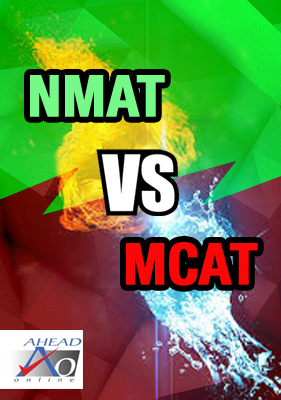In the Philippines, a student who wants to pursue a career in medicine takes the National Medical Admission Test (NMAT). The NMAT serves as a screening tool for an applicant seeking admission to Philippine medical schools. Thus, test is intended to measure the applicant’s mental and academic skills essential in the pursuit of medical education.
If the aspiring doctor is looking at studying in the United States, however, he should take the Medical College Admission Test (MCAT). Most medical schools in the United States and Canada requires the standardized test, MCAT. Likewise, provides admissions committees with important information about the applicant’s readiness for the rigorous routine of medical school.
Apart from geographic validity, there are other factors which differentiate the NMAT from the MCAT.
MCAT
- The MCAT is a multiple-choice examination which assesses your skills in problem solving and critical thinking, as well as your knowledge of natural, behavioral, and social science concepts and principles.
- The updated version of the MCAT, which was launched last April 2015, features four sections:
- Biological and Biochemical Foundations of Living Systems
- Chemical and Physical Foundations of Biological Systems
- Psychological, Social, and Biological Foundations of Behavior
- Critical Analysis and Reasoning Skills
- Additionally, most medical schools do not accepted MCAT exam scores which are more than three years old.
- You will receive five scores from your MCAT exam: your score from the four sections and the combined total score. Accordingly, these scores are to be scaled and to be equated.
NMAT
- The NMAT is a two-part test, the first measures mental ability and the second, academic proficiency.
- There are four subtests under each one:
- Firstly, for Part 1, these are Verbal, which focuses on word analogies and reading comprehension; Inductive Reasoning, which consists of number, letter, and figural series and figure grouping items; Quantitative, which features fundamental operations, problem solving, and data interpretation, and Perceptual Acuity with three types of items, namely, hidden figure, mirror image, and identical information.
- Moreover, in Part 2, the four subtests tackle Biology,Physics, Social Science, and Chemistry. The Social Science section includes items in psychology, sociology, and anthropology.
- You will receive three scores from your NMAT exam: the total of the four subtests under Part 1, which is the APT Composite; the total of the four subtests under Part 2, which is the SA Composite; and the total score of the eight subtests, which is the General Performance Score (GPS).
- Finally, the APT Composite and SA Composite are converted to an equivalent standard scores from a common normalized scale.
- Similarly, the GPS is converted to its equivalent standard score and corresponding percentile rank.
Should you choose to take the NMAT, you’ll be happy to note that AHEAD Professional Network, the training division of AHEAD Tutorial & Review Center, offers an exemplary review program for the NMAT. For more details, send a message to info@ahead.edu.ph.


